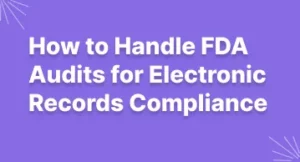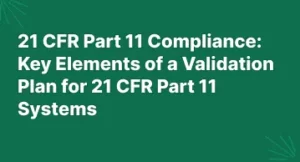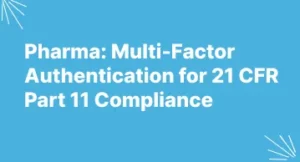CLIA – Overview
Clinical Laboratory Improvement Amendments (CLIA) is a set of laws and regulations that are designed to ensure that all laboratory testing is performed accurately and reliably. CLIA was established in 1988 by the Centers for Medicare and Medicaid Services (CMS) and applies to all laboratories that process patient specimens for the purpose of diagnosis, treatment, and prevention of diseases in the United States.
The goal of CLIA is to ensure the accuracy, reliability, and timeliness of laboratory tests performed in healthcare settings. The regulations protect patients by ensuring that all laboratory tests are conducted according to standard operating procedures and are interpreted correctly.
CLIA sets certain criteria for laboratories to meet in order to be certified and remain compliant. This includes having qualified personnel, quality control measures in place, and meeting specific requirements for certification and inspection. Laboratories must also adhere to regulations pertaining to the handling of specimens and the use of laboratory equipment.
What is Clinical Laboratory Improvement Amendments (CLIA)?
The Clinical Laboratory Improvement Amendments (CLIA) are regulations set in place by the United States Department of Health and Human Services that establish quality standards for all laboratories that perform laboratory testing of human specimens. CLIA was designed to ensure accurate and reliable results from laboratory tests by setting requirements for personnel qualifications, safety, accuracy, proficiency testing, and quality control.
Under CLIA, laboratories must be certified in order to provide any test results used for diagnosis, treatment, or to prevent a disease or condition. The certification process varies depending on the type of laboratory and its location.
History and Purpose of CLIA
The Clinical Laboratory Improvement Amendments (CLIA) program was started in 1988 by the U.S. Centers for Medicare and Medicaid Services (CMS). The purpose of the program is to establish standards for laboratory testing that ensure the accuracy and reliability of the results. CLIA also ensures that laboratories are inspected regularly and receive a certification after meeting the program’s regulations. This process results in higher quality results and safeguards patient health and safety.
The CLIA program is based on guidelines set by other organizations such as the National Committee for Clinical Laboratory Standards (NCCLS) and the College of American Pathologists (CAP). The guidelines, which were initially written in 1975, evolve over time to keep up with the newest technologies. The program applies to any laboratory that tests human specimens, with the exception of research and forensic labs.
CLIA Requirements
Clinical Laboratory Improvement Amendments (CLIA) require that all laboratories meet certain standards in order to be certified. These standards vary depending on the type of laboratory and its location. In general, CLIA requires that the laboratory follows strict regulations relating to quality control, quality assurance, personnel qualifications, and inspections.
For example, laboratories must have a quality control program in place to ensure accurate results from their testing. This includes implementing procedures to check for reagent errors, calibrating equipment, and monitoring for deviations from standard practices. Quality assurance is also required, which means the laboratory must have documented processes in place to ensure quality control.
Inspections are another requirement of CLIA. The laboratory must be inspected on an ongoing basis by a CLIA-approved inspection agency. Inspectors will look for any areas in which the laboratory may not be meeting CLIA standards. These inspections help to ensure that laboratories are providing accurate testing results.
It is important for laboratories to understand the requirements of CLIA and how they will affect their operations. Compliance with these regulations is essential in order to obtain certification and to remain certified.
Ensuring Quality Control with CLIA
Quality control is essential in laboratory testing, and CLIA plays an important role in achieving this. Quality control helps ensure that test results are accurate and reliable, and that there is consistency in laboratory testing, no matter the location or type of laboratory. CLIA sets standards for laboratory testing quality, personnel qualifications, safety practices, and more. Laboratories must meet these standards if they wish to obtain a CLIA certification.
CLIA has regulations in place to ensure that quality control is maintained throughout the testing process. First, laboratories must assign personnel who have the knowledge, training, and experience to perform accurate testing. Second, CLIA requires laboratories to develop testing procedures that are specific to the test being performed, and to document any changes that have been made. Third, laboratories must also document and report test results accurately, and properly maintain records.
In addition to these requirements, CLIA also inspects laboratories so that their performance meets the standards established by CLIA. During inspections, inspectors evaluate the accuracy of test results, personnel qualifications, quality control procedures, and more. If a laboratory fails to meet CLIA standards, it could lose its certification, and be subject to fines and other penalties.
Understanding Quality Assurance with CLIA
Quality Assurance (QA) is an important part of laboratory testing that enables laboratories to conduct reliable tests with accurate results. CLIA was designed to help laboratories meet higher standards of quality assurance by providing guidelines and regulations to ensure the safety and accuracy of laboratory testing.
The CLIA program sets out specific requirements for laboratories such as the qualifications of personnel performing the tests, the maintenance and monitoring of the equipment used, and the proper handling and storage of specimens.
CLIA also provides a system of checks and balances for laboratories, ensuring that the tests are conducted in accordance with accepted principles of laboratory practice and good laboratory procedures. This includes the use of quality control samples to monitor laboratory performance and verify accuracy in test results.
Overall, CLIA provides a standardized system for laboratories to follow in order to guarantee the highest quality of laboratory testing. By following CLIA guidelines, laboratories can promote quality assurance and ensure accurate, reliable test results.
Inspections
CLIA does inspections on laboratories at different times throughout the year in order to ensure that quality standards are being met. These inspections can occur as often as every two years and will examine the laboratory’s practices, procedures, and personnel. During these inspections, the inspectors look for compliance with CLIA regulations, provide assistance when needed, and give feedback to the laboratory to promote improvement.
Inspections are meant to protect patients by ensuring that proper safety and testing procedures are in place. The inspectors look for accuracy in test results, proper understanding of the tests being conducted, and effective use of laboratory equipment. Additionally, they monitor the laboratory environment to make sure it is clean and safe for workers and patients alike.
During their inspections, inspectors may also review a laboratory’s records, observe its processes in action, and ask questions of staff. They also use specific assessments to gauge how effectively the laboratory is adhering to CLIA regulations. Finally, they provide guidance and recommendations on how the laboratory can further improve its operations.
CLIA Certification
Clinical Laboratory Improvement Amendments (CLIA) require laboratories to obtain a certification in order to conduct testing. In order to obtain this certification, the laboratories must meet certain standards, including meeting minimum accuracy requirements, conducting initial and subsequent performance tests, and regularly performing quality control tests.
The certification process begins when the laboratory completes an application and sends it to their state or federal regulatory agency. The agency will then inspect the laboratory to ensure that it meets all of the requirements for certification. This inspection may include checking the laboratory’s equipment, procedures, personnel, quality control system, and other components.
In addition to the initial inspection, CLIA certified laboratories must also complete a yearly renewal process. During the renewal process, the agencies will review the laboratory’s procedures, personnel qualifications, and overall quality control system to ensure continued compliance.
CLIA certification is important for laboratories because it ensures that they are providing accurate and reliable test results. This helps to protect patients and ensures that proper diagnosis and treatment take place.
The Benefits of Participating in CLIA
Participating in the Clinical Laboratory Improvement Amendments (CLIA) program offers laboratories numerous benefits that help improve the quality of lab tests and procedures. One of the primary advantages of being certified under CLIA is that it provides a platform for laboratory personnel to recognize and maintain standards that are essential to safe and effective patient care. By documenting processes, practices, and performance levels that have been proven to reduce errors and improve accuracy, laboratories can ensure that the tests they produce meet the same standards as those conducted by other laboratories.
In addition to providing assurance that the tests and results are accurate, laboratories benefit from participating in CLIA in other ways. The CLIA program helps to identify potential areas for improvement, provides access to inspection personnel with expertise in quality assurance, and helps to provide continuing education and training opportunities for laboratory personnel.
Overall, CLIA can help to ensure that laboratories are providing the highest quality testing possible. Through participation in this program, laboratories have the opportunity to demonstrate their commitment to safety and accuracy, which will lead to better patient outcomes.
Challenges of CLIA
When it comes to achieving compliance with CLIA requirements, laboratories may face some challenges. Laboratories must be able to meet all the requirements listed in order to achieve certification. This includes having qualified personnel and laboratory space, as well as having the necessary equipment and experience in the laboratory techniques being used.
Laboratories must also manage all the paperwork that comes along with CLIA compliance, and this can be a time-consuming process. The laboratory staff must also stay up to date on any changes or new regulations, as the criteria for certification is continually evolving.
CLIA certification is also expensive, and the cost of maintaining it can be quite high. Laboratories must invest in staff training and quality assurance processes in order to meet the requirements for certification. This makes it difficult for small laboratories to compete with larger ones.
The process of obtaining CLIA certification can also be long and arduous, and the time frame for obtaining a certificate can vary depending on the complexity of the laboratory’s procedures. Laboratories must be patient and put in the effort to make sure that they are meeting all requirements in a timely manner.
CLIA has been established to ensure that all clinical laboratories provide accurate and reliable test results. The agency works to ensure that the testing procedures used in these laboratories meet its standards. The CLIA Quality System requirements mandate that all laboratory personnel receive proper training, use approved methods and instruments, and strive to maintain quality control.
Inspection of laboratories is conducted to ensure compliance with CLIA regulations and to ensure that quality is maintained. Those laboratories that comply with CLIA standards are rewarded with certification, allowing it to be recognized as a CLIA-certified laboratory.
CLIA participation has many benefits, including improved quality control and assurance, better patient care, and increased confidence in laboratory testing results. However, achieving and maintaining CLIA regulations can be challenging, and laboratories must remain compliant in order to maintain their certification.
In conclusion, Clinical Laboratory Improvement Amendments (CLIA) were established to ensure all laboratories provide accurate and reliable testing results. With its various regulations and inspections, CLIA promotes quality control and assurance, as well as better patient care. It is important for laboratories to understand and comply with CLIA regulations in order to remain certified.
Now that you have a better understanding of Clinical Laboratory Improvement Amendments (CLIA), it’s important to ensure that your laboratory is compliant with the regulations. The best way to do this is by consulting an expert in laboratory management who can provide guidance and advice on how to ensure your lab meets all CLIA requirements.
It can often be difficult to navigate the CLIA regulations alone, so having access to an expert is essential for any laboratory. An expert can analyze your laboratory’s processes and procedures and identify any areas where improvements are needed in order for you to become compliant. They can also provide advice on how to maintain compliance over time.
Reaching out to an expert is a simple, straightforward process and can be done either online or over the phone. So, if you have any further questions or concerns about CLIA or need assistance in becoming compliant, don’t hesitate to consult an expert and get the help you need.
What is Clinical Laboratory Improvement Amendments (CLIA)?
1. What is Clinical Laboratory Improvement Amendments (CLIA) and what is its purpose?
The Clinical Laboratory Improvement Amendments (CLIA) program established standards for all laboratory testing to ensure the accuracy, reliability, and timeliness of test results regardless of where they are performed. Created in 1988, it standardizes and regulates laboratory testing to protect the health and safety of patients.
2. What type of requirements must a laboratory meet to be compliant with CLIA?
The requirements for laboratories vary based on the kind of tests being performed and the geographic locations of the laboratories. The CLIA program sets regulations and mandates that laboratories must complete inspections, maintain staff qualifications and follow quality control procedures.
3. How does CLIA impact the quality of testing in clinical laboratories?
CLIA helps ensure that the highest quality of testing is consistently maintained throughout all laboratories. It does this through regular inspections, critically reviewed quality control plans and monitoring of personnel qualifications.
4. What is the process for ensuring quality control in laboratory tests?
Quality control is achieved by performing internal and external evaluations and monitoring activities regularly to ensure that quality standards are being met. Additionally, laboratories must establish quality assurance policies to track and trends in the results of laboratory tests.
5. What is involved in obtaining a CLIA certification?
In order to obtain a CLIA certification, laboratories must submit a CLIA Application and then participate in an on-site survey conducted by a CLIA Surveyor. The laboratory must demonstrate compliance with CLIA criteria and regulations in order to receive its certification.
6. What are the benefits of participating in CLIA?
Participating in CLIA can help laboratories improve their operations and ensure that patients receive accurate and reliable test results. It also protects the rights and interests of patients by providing assurance that laboratory tests meet accepted standards of quality.
7. What challenges do laboratories face when trying to comply with CLIA?
Laboratories can experience a number of challenges when trying to comply with CLIA. These include difficulties complying with quality control standards, issues surrounding personnel qualifications, and financial considerations related to the cost of implementation.





